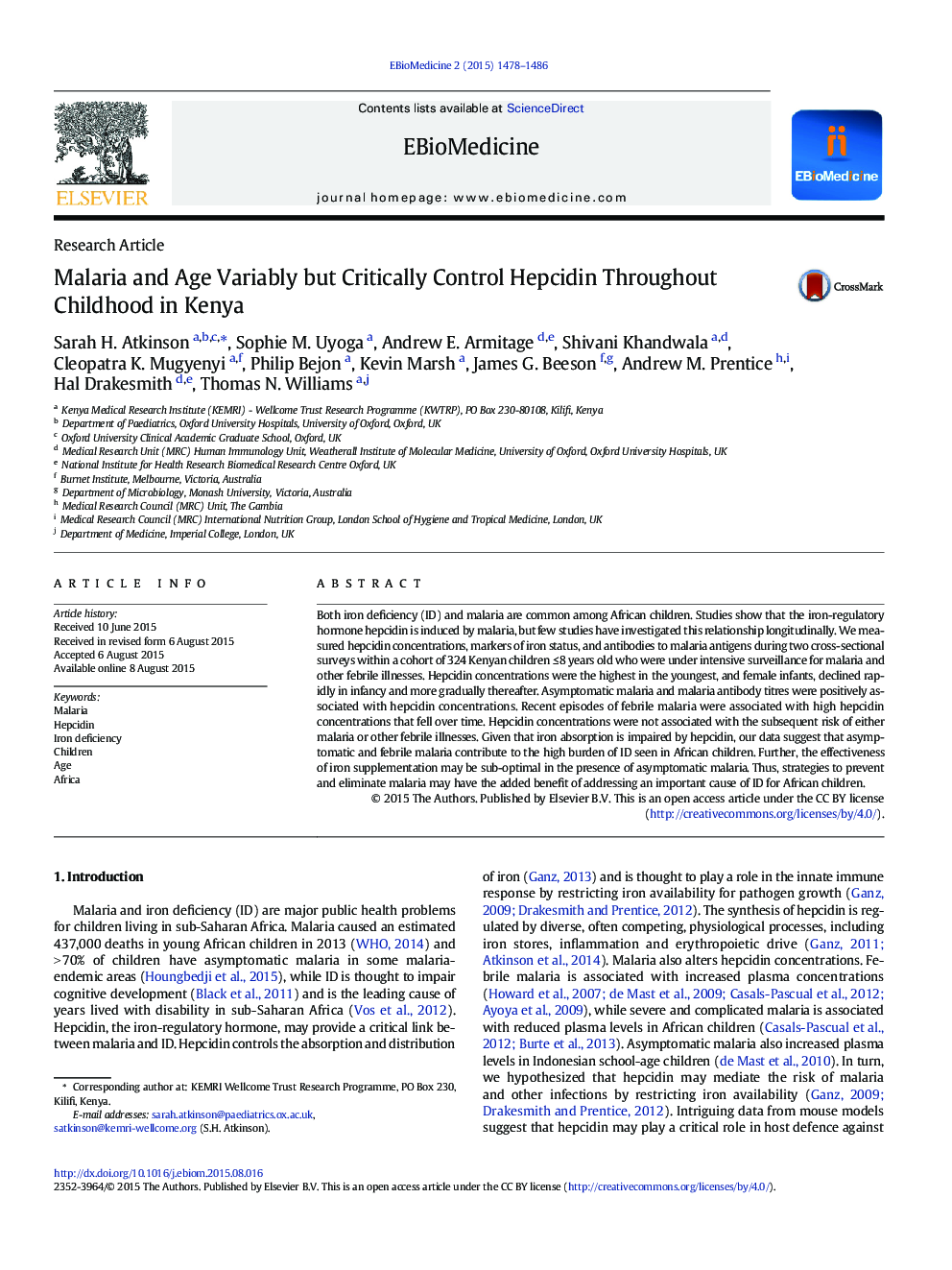| کد مقاله | کد نشریه | سال انتشار | مقاله انگلیسی | نسخه تمام متن |
|---|---|---|---|---|
| 2121236 | 1085772 | 2015 | 9 صفحه PDF | دانلود رایگان |
• Hepcidin fluctuates with age with the highest levels in female infants.
• Asymptomatic and febrile malaria increase hepcidin levels, but hepcidin does not predict the risk of malaria or febrile illness.
• Strategies to control malaria may have the added benefit of reducing iron deficiency in childrenIron deficiency and malaria are common among children living in Africa. Hepcidin is a hormone that inhibits dietary iron absorption. Hepcidin levels are increased during malaria infection and this protects against infection in mice. In Kenyan children we found that hepcidin levels varied by age and in infants by sex. Malaria increased hepcidin levels in well children and for a time after treatment in sick children. Hepcidin levels increased as antibodies to malaria increased, but hepcidin did not protect children from getting malaria. Our study suggests that malaria may be one of the causes of iron deficiency in African children.
Both iron deficiency (ID) and malaria are common among African children. Studies show that the iron-regulatory hormone hepcidin is induced by malaria, but few studies have investigated this relationship longitudinally. We measured hepcidin concentrations, markers of iron status, and antibodies to malaria antigens during two cross-sectional surveys within a cohort of 324 Kenyan children ≤ 8 years old who were under intensive surveillance for malaria and other febrile illnesses. Hepcidin concentrations were the highest in the youngest, and female infants, declined rapidly in infancy and more gradually thereafter. Asymptomatic malaria and malaria antibody titres were positively associated with hepcidin concentrations. Recent episodes of febrile malaria were associated with high hepcidin concentrations that fell over time. Hepcidin concentrations were not associated with the subsequent risk of either malaria or other febrile illnesses. Given that iron absorption is impaired by hepcidin, our data suggest that asymptomatic and febrile malaria contribute to the high burden of ID seen in African children. Further, the effectiveness of iron supplementation may be sub-optimal in the presence of asymptomatic malaria. Thus, strategies to prevent and eliminate malaria may have the added benefit of addressing an important cause of ID for African children.
Journal: EBioMedicine - Volume 2, Issue 10, October 2015, Pages 1478–1486
